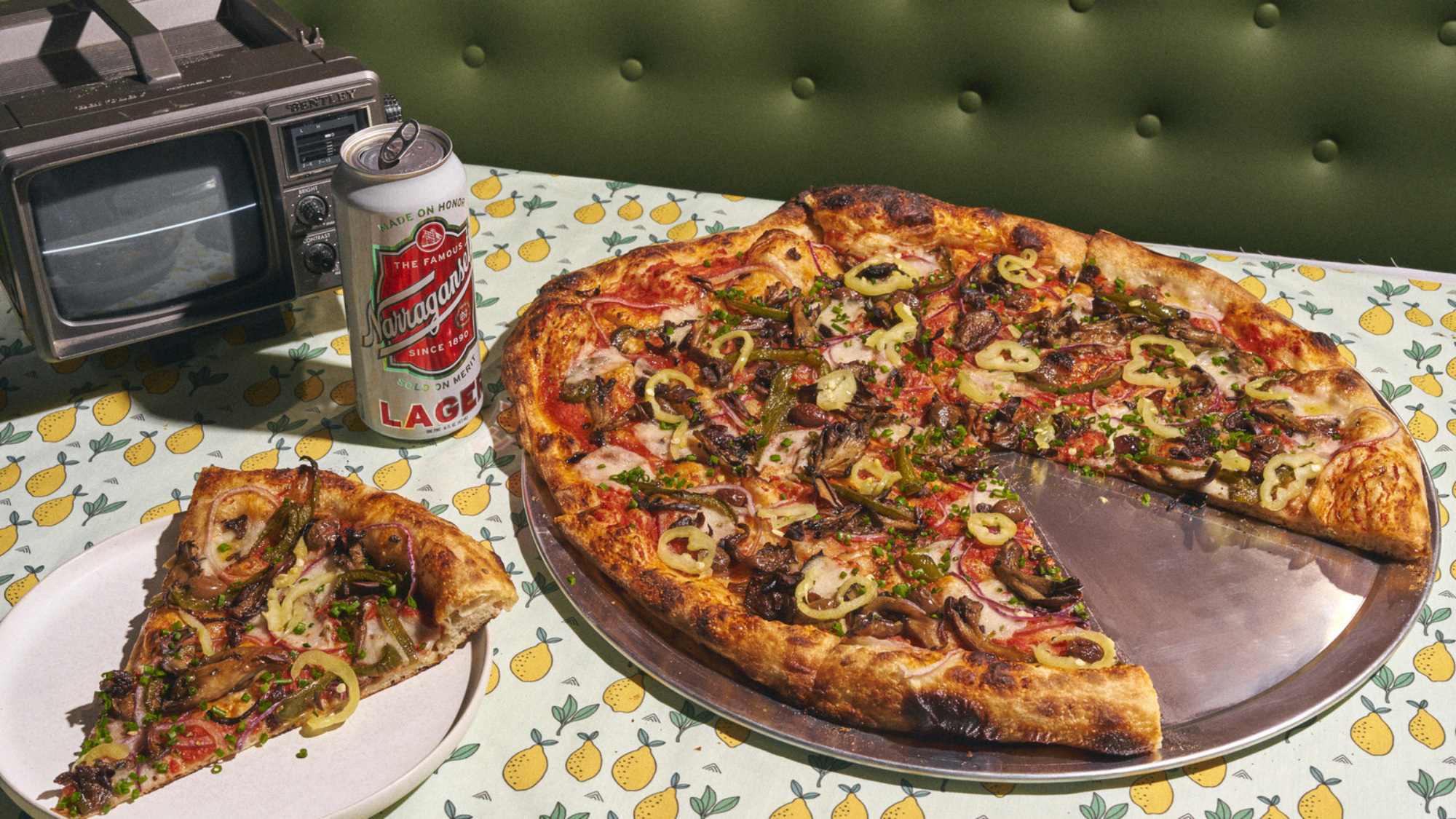The Pizza Edition: A Delicious Dive into the World of Pizza 2024

The Pizza Edition. Just the word alone conjures up images of gooey cheese, crispy crusts, and many mouthwatering toppings. Whether it’s the unmistakable aroma wafting through the streets of Naples, Italy, or the sight of a freshly baked slice in New York, pizza is more than just a meal – it’s a cultural phenomenon. The Pizza Edition For decades, it has held a special place in hearts (and stomachs) across the globe. Welcome to The Pizza Edition, where we dive deep into this beloved dish’s history, evolution, and variety. The Pizza Edition

A Brief History of Pizza the pizza edition
The story of pizza dates back thousands of years. the pizza edition Though many associate pizza with Italy, the concept of flatbreads with toppings can be traced back to ancient civilizations such as the Egyptians, Greeks, and Romans. The Pizza Edition These ancient cultures would bake flatbreads with oils, herbs, and various toppings – a rudimentary form of pizza.
However, the modern pizza as we know it today was born in the 18th century in Naples, Italy. Street vendors and poor workers needed affordable, filling food, and pizza fits the bill. the pizza edition It was a simple flatbread topped with tomatoes, cheese, olive oil, and sometimes anchovies or garlic.
The game changer came in 1889 when Queen Margherita of Italy visited Naples. A local pizzaiolo (pizza maker) named Raffaele Esposito created a special pizza for her, topped with tomatoes, mozzarella, and basil to represent the colors of the Italian flag. Thus, the iconic Pizza Margherita was born, and the rest, as they say, is history.
Global Expansion: Pizza’s Journey Across Continents
As Italian immigrants began to travel the world in the late 19th and early 20th centuries, they brought their culinary traditions with them. Pizza arrived in the United States in the early 1900s, particularly in cities with large Italian communities such as New York, Chicago, and Philadelphia.
In New York, pizza quickly gained popularity. By the 1930s, pizzerias were popping up all over the city, serving slices to busy workers and families. What made New York pizza unique was its thin, foldable crust and generous layers of cheese. New Yorkers developed a culture around pizza – it became a street food, a lunch break staple, and an American obsession.
Meanwhile, in Chicago, pizza evolved into something entirely different. 1943, Pizzeria Uno opened and introduced the world to Chicago Deep-Dish Pizza. Unlike its New York counterpart, deep-dish pizza had a thick, buttery crust and was baked in a pan, giving it a pie-like appearance. It was packed with layers of cheese, meat, and tomato sauce, creating a hearty meal that stood in stark contrast to the thin, crisp slices of New York.
Pizza’s versatility has allowed it to adapt to regional tastes worldwide. You might find toppings like corn, mayonnaise, and squid in Japan. In Brazil, peas are a common addition. In India, pizzas are often spiced with tandoori chicken, paneer, or chutney. And, of course, inventive toppings like buffalo chicken, barbecue sauce, and even macaroni and cheese have become commonplace in America.
The Art of Pizza Making
At its core, pizza is simple: dough, sauce, cheese, and toppings. But mastering the art of pizza-making is anything but easy. It requires precision, technique, and passion.
The Dough
A great pizza begins with the dough. Traditionally, pizza dough is made from just four ingredients: flour, water, yeast, and salt. The type of flour used can vary depending on the style of pizza. For instance, Neapolitan pizza calls for 00 flour, a finely milled flour that creates a soft, chewy crust. On the other hand, New York-style pizza typically uses high-gluten bread flour for a crispier crust.
Once the dough is mixed, it must be kneaded to develop gluten, the protein that gives it its elasticity. After kneading, the dough is left to rise, or “proof,” allowing the yeast to ferment and create air pockets, which give the crust its light, airy texture. the pizza edition
The Sauce
A simple yet flavorful tomato sauce is critical to a good pizza. In traditional Italian pizza-making, the sauce is often made from fresh San Marzano tomatoes, known for their sweet, tangy flavor. The sauce is minimally seasoned with salt, olive oil, and sometimes garlic or oregano, allowing the natural flavor of the tomatoes to shine.
For white pizzas or other variations, sauces like pesto, béchamel, or a simple olive oil and garlic base can be used.
The Cheese
Mozzarella is the cheese of choice for most pizzas. Fresh mozzarella, mainly made from buffalo milk, has a rich, creamy texture and melts beautifully on a pizza. However, low-moisture mozzarella is often used in places like the United States because it provides a more consistent melt and prevents the pizza from becoming soggy. the pizza edition
While mozzarella is the classic choice, other cheeses like parmesan, provolone, gouda, and ricotta can add depth and complexity to a pizza. Sometimes, pizzas may even be topped with blue or goat cheese for a unique flavor profile.
The Toppings
The beauty of pizza lies in its versatility. There are endless possibilities, from classic toppings like pepperoni and mushrooms to more unconventional options like pineapple or artichokes. However, balance is critical. A well-made pizza has a harmony of flavors and textures, with no one ingredient overpowering the rest.
Pizza Styles: More Than Just New York and Chicago
While New York and Chicago may be the most famous pizza styles in the U.S., there are many other variations worth exploring:
- Neapolitan Pizza: As the original pizza, Neapolitan pizza is known for its soft, pillowy crust, simple toppings, and use of fresh, high-quality ingredients. It’s typically baked in a wood-fired oven at high temperatures, producing a slightly charred, flavorful crust. the pizza edition
- Sicilian Pizza: Originating from Sicily, this pizza has a thick, spongy crust and is often rectangular. It’s baked in a pan and topped with a variety of ingredients, sometimes including anchovies or breadcrumbs.
- Detroit-Style Pizza: This lesser-known but equally delicious pizza features a thick, crispy crust baked in a square pan. The cheese is spread to the edges, creating a caramelized, crispy border.
- St. Louis Pizza: A regional favorite in Missouri, St. Louis pizza has a thin, cracker-like crust and is cut into squares. It’s topped with Provel cheese, a processed cheddar, Swiss, and provolone blend.
- California-Style Pizza: Pioneered by chefs Alice Waters and Wolfgang Puck, this style focuses on gourmet toppings and fresh, often organic ingredients. Pizzas might be topped with arugula, smoked salmon, or goat cheese.
Pizza in Pop Culture
Beyond its culinary importance, pizza has a significant place in pop culture. From its role in movies like Teenage Mutant Ninja Turtles to the iconic pizza delivery scene in Home Alone, pizza has transcended the kitchen to become a cultural symbol. It’s a favorite food for parties, a late-night snack, and the ultimate comfort food. the pizza edition

Pizza even has its own national day—National Pizza Day is celebrated on February 9th in the United States, when pizza lovers across the country indulge in their favorite slices.
The Future of Pizza
As food trends continue to evolve, so does pizza. In recent years, health-conscious eating has led to innovations like cauliflower crust, gluten-free dough, and vegan cheese. Artisanal pizzerias have become increasingly popular, with chefs experimenting with fermentation techniques, sourdough bases, and locally sourced toppings.
With new toppings, the pizza edition styles, and cooking methods constantly emerging, the pizza world is more exciting than ever.
Conclusion
In all its forms, pizza is more than just a food – it’s an experience, a tradition, and a canvas for creativity. the pizza edition Whether you’re a fan of the classic Margherita, a deep-dish devotee, or someone who loves experimenting with bold new flavors, there’s no denying the universal appeal of this beloved dish.
Welcome to The Pizza Edition, where every slice tells a story, and every bite is a journey. https://ukdesignerwomen.co.uk
